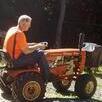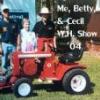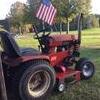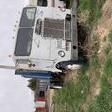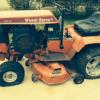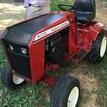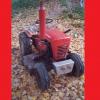Leaderboard
-
in all areas
- All areas
- Markers
- Marker Comments
- Marker Reviews
- Articles
- Article Comments
- Article Reviews
- Classfieds
- Classified Comments
- Classified Reviews
- Wiki's
- Wiki Comments
- Wiki Reviews
- Blog Entries
- Blog Comments
- Images
- Image Comments
- Image Reviews
- Albums
- Album Comments
- Album Reviews
- Files
- File Comments
- File Reviews
- Posts
-
Custom Date
-
All time
November 28 2011 - December 16 2025
-
Year
December 16 2024 - December 16 2025
-
Month
November 16 2025 - December 16 2025
-
Week
December 9 2025 - December 16 2025
-
Today
December 16 2025
-
Custom Date
09/28/2023 - 09/28/2023
-
All time
Popular Content
Showing content with the highest reputation on 09/28/2023 in all areas
-
6 pointsI’m a ChE, but fuel blending isn’t my specialty. However, I can approximate an answer: Gasoline is a mixture of a bunch of different hydrocarbon molecules, the average of which have approximately 8 carbons. Hence the “oct” in octane. To get the specific properties they need to meet specifications and meet customers’ needs, the actual blend from manufacturer-to-manufacturer and from product-to-product can vary a bit but must always fall into certain windows to meet energy content, knock resistance, evaporation rate, stability, and a panoply of other requirements. The backbone fuel blends for the two primary fuel grades can therefore be tweaked a bit to match up to performance and cost targets. Higher octane blends probably contain (slightly) more long chain or interesting molecules to bump the octane rating somewhat naturally versus the gains that could be made by boosting octane with specialty - and likely more expensive - chemical additives. So using two base fuels is probably just more economical for the gasoline producers than merely spiking the mix with octane improvers. They used to do that very thing when tetraethyl lead was allowed. While the petroleum companies make money faster than their shareholders can spend it, their margins on gasoline are actually quite low. They make up for it in the unfathomable volumes of gasoline they sell to us to burn in our trucks and SUVs. If they can save a half a penny a gallon and still meet minimum specs, you can be assured they will do so. While I would bet the additive package differences between regular and premium aren’t too significant, the gas retailers make an effort to market the detergents added to their premium grades as an upgrade too. If they are indeed blending the detergent additives differently it also makes sense to have two stocks at the gas station rather than one. Lastly, most octane boosting additives are added as a very small percentage of the overall blend. Proportioning equipment to bleed in a few drops of something into a fast-flowing stream of liquid is quite expensive to buy and fussy to keep calibrated to a level that would guarantee product quality. It’s better to do this at the factory where they have sophisticated equipment, lots of resources, and ways to measure and ensure quality. I assume it’s not done as widely these days, but gasoline used to be a bit of a catch-all for overruns or off-spec products also made in the refinery. Benzene and other aromatics, as an example, used to end up in gasoline in higher proportions than they do now. The products are tightly controlled and closely regulated since there are so many peripheral environmental and health problems that can result from too much of this or that being dumped in. And the auto manufacturers have also pushed the industry to make fuels that don’t cause them avoidable warranty claims. While the fuel today is different than 40 years ago, I would be a hard sell on thinking it used to be empirically better. In the winter, gasoline blends are a little different than they are in warmer months. The fuel mix is lightened up a bit to make vaporization in the engine easier to promote easy starting and clean burning. This can knock the energy content down a little bit and translate into marginally increased consumption. Accompanied by the increased fuel use needed by the car to keep the operating temperature up you’ll notice a measurable hit to your fuel economy. I assume that octane level might be a little different in the winter blends than in the summer as a consequence of this reblending. The octane rating - while a measure of the fuel’s resistance to autoignite at elevated temperatures - is benchmarked against the characteristics of precise blends of octane and other smaller molecules. So the ‘oct’ nomenclature carries over in this instance too. It follows then that the resultant octane rating that comes from blending gasolines of different octane ratings is fractionally proportional to the amounts of each used. E.g. if you blend them 1:1 you’ll end up with an octane rating halfway between either of them. So the station really only needs to keep two base fuels on hand. As for ethanol, I make no efforts to avoid it. It’s just one more additive in the mix. Steve
-
5 pointsAs everyone has mentioned above, that definitely has been stretched to accommodate the twin engine. Yes, I own the BIG GT14 now. I have done a lot of upgrades to it since owning it. Here is a link to my YouTube Channel. There are a few other videos besides the one in my post. I have owned three total 4x4 built by Bob Rock. Now only have two. YouTube Channel Wheel_Horse_GT16_4x4_Garden_Tractor.mp4
-
4 pointsSince I live on a dirt road, I had these two out today to fix the road and sweep the driveway after all this rain and dirt getting tracked in. The loader tractor has the wrong decals, but that’s the way it got it. Then when I got the loader,(separately)it had the same decal as the ones on the hood so I left it. Sometimes I think about selling the sweeper, because I rarely use it. Then when I do, I’m like damn this thing works great. I’m going to keep it!!!
-
4 pointsWell broke down and got me one of those battery grease guns. I have an old Lincoln hand pump model for 30 some years. Most of my greasing is the old wheel horse or xi machines. Harbo Fright has a deal for a Hercules Brand 5 amp hour battery and charger and get the tool free. $119. Choose the grease gun. I just about got the first tube through it and I must say, I should have had one of these years ago. The quality is good. I have some other Hercules stuff and it has been real good. I am not much on the off shore stuff, I just figure most that say they are made here are just assembled here and mostly automated.
-
3 pointsAdded a new toy to the garage tonight, picked up a B80 at an auction that needs help. So need to learn about the 80 and how to get it up and running. Any hints would be great....
-
3 pointsSteve, that is an awesome write-up. Thank you. I'm going to copy that and keep it handy to review whenever these kind of fuel questions come up.
-
3 pointsI don’t know how long ethanol enhanced gasoline has been widely used in my part of the Midwest, but it’s been at least my entire driving career of over 30 years. As far back as high school (for me 1989-1993) I can remember that Caseys gas stations sold ethanol laced 89 octane for a lower price than their regular 87 octane straight gas. The other stations didn’t mimic Casey’s pricing strategy (and Caseys gave up on it too), but the bulk of their fuel was also fortified with ethanol. Few problems resulted. One of the benefits of alcohol in gasoline is that it can capture some amount of water and pull it along harmlessly. Used regularly and continuously, this means it grabs hold of any water in the tank and keeps it from accumulating. In small amounts, the water passes through completely unnoticed. Over the counter additives like Heet do the same thing to help dry out a gas tank that has a little bit of water in it. But the alcohol/gas mixture can only hold a finite amount of water. In the case where an older car had never been fueled with alcohol containing fuels – or in storage tanks where only gasoline had ever been held – there could be a significant amount of water sitting in the bottom of the tank. In this water are the water-soluble contaminants and dirt that don’t dissolve in the organic portion of the mix. When alcohol is introduced to these tanks it can make all of this contamination available for ingestion by the engine. This phenomenon was in fact fairly common during the initial changeovers to alcohol blended fuels. There’s a lot of time and expense involved in dumping out a tank completely so it wasn’t done in many cases unless a problem developed. Once all the residual gunk and water was out of the tanks, this became less commonplace. I didn’t search for corroborating evidence of this, so hopefully it exists. It used to be in common discussion decades ago in my circles. Additionally – and this was mentioned in the boating article Ed linked – straight gasoline and alcohol have different solvent properties. This means that the stuff that ends up in the fuel distribution tanks, your portable gas can, your car’s fuel tank, your boat’s underfloor fuel tank, or the little tank and carburetor in your Wheel Horse can eventually accumulate some materials that aren’t dissolved by gasoline. When alcohol is introduced, some of this stuff can reenter solution as the alcohol and/or water chews on it. So jets can plug with debris that didn’t cause problems before and crud and schmutz can get into functional areas where they weren’t previously. If you evaporate out the fuel due to sitting, this stuff can crust up in there and may defy dissolution by normal cleaners used in fuel systems. Phase separation happens in both straight gas and in alcohol enhanced fuels. Water and gasoline do not mix in appreciable quantities. If you dump a cup of water in a gigantic fuel storage tank that is filled with straight gasoline, the water will fall to the bottom of the tank and sit there as discrete droplets or as a puddle. It will probably extract some amount of water soluable compounds as it falls through the solution too. Phase separation is therefore instantaneous and easily detectible in straight gas situations. Perhaps phase separation isn’t the right term in the above scenario. I guess since they never mix and create a single phase that it’s technically different that what is considered when the water/alcohol mix drops out of the gasohol. Mix 10% alcohol into the gasoline and now you have available a molecule that can hold onto water or dissolve into water in any proportion. Water and alcohol are both polar molecules meaning that they have one end with a negative charge and one end with a positive charge. So they have some similar properties, one of which is miscibility. This was the “like dissolves like” lesson touched on in high school physical science classes. The interesting part is that the alcohol molecule also has a substantial chunk of it that exhibits properties that are similar to things like gasoline. These uncharged things are known as non-polar molecules. This means that most alcohols also exhibit solubility in non-polar gasoline too. They sort of walk the line between two worlds. But there are solubility limits of most any solvent/solute combination. Put too much sugar in your iced tea and eventually you’ll see a sludge of undissolved sugar sitting in the bottom of your glass. Put too much water in the alcohol enhanced fuel and eventually it too drops out. As it goes it can also unlock the alcohol/gasoline affinity for each other and drop out a proportionally higher amount of water than you’d expect. Up to that point it was a stable mixture. In this case the fundamental problem isn’t that there is alcohol in the fuel it’s that too much water got in the tank. Waterlogging would happen way sooner in a tank that is filled with straight gas, but the effect is highlighted in the alcohol system because the split can happen suddenly and impressively. This has been particularly exciting in the boating world where water contamination of fuel can come from rain ingress, humidity absorption, condensation in the tank, and water leakage into the tank from entry through the boat’s many vulnerable spots. Hit the tipping point for the mixture in the tank and the water drops to the bottom where the fuel pickups deliver it to the engine. I see online a lot of talk about how ethanol fuel pulls water out of the ambient air, but I don’t know how significant an issue this really is. I suspect it’s pretty trivial compared to water ingress from other pathways. High potency ethanol alcoholic drinks don’t really exhibit a tendency to suck water into them from the air. Tanks that aren’t stored full or capped do breathe as temperatures fluctuate and can therefore condense humidity on their walls. This is a real source of water contamination but is easily managed in frequently used vehicles. Or the tank should be stored nearly full to minimize the volume of breath it can take during each cycle. The variations in solvent properties of straight fuels and alcohol spiked fuels can affect containment materials. Older hoses and gaskets are certainly susceptible to dissolution by the alcohol. I suspect that there are coatings on carburetor floats that don’t agree with the alcohol too. Modern engines have updated materials, but older ones didn’t have to deal with this when designed so can be problematic. This is a definite problem on older boat gas tanks that are made with older rubber and plastics. I do not have much understanding of alcohols’ contributions to corrosion, but I see it mentioned all the time. I assume it’s the concomitant availability of water that influences corrosion in alcohol fuel systems but I don’t really know. Corrosion in general is a complex subject and not very well understood by those outside the specialty. I literally had classes and have read books devoted to it and I am far from understanding the magic and mysteries of why some things do what they do. In the interest of full disclosure, I do periodically buy the canned fuel from the big box stores for my 2-stroke equipment. It’s not so much a concern about ethanol as it is laziness and not wanting to have a can of mixed gas sitting around that I don’t use very frequently. The cans are strong little suckers and have a nice cap that seals tight and I don’t have to worry about them. And the laziness thing… I have bought the 4-stroke canned gas too, but that was just to tinker with it to see if I could detect any running quality differences in my lawnmower. I couldn’t. And it was also convenient. I don’t want to sound like I deny that people are experiencing issues when running their equipment on ethanol extended fuel. I do suspect that many of the issues are existing problems that are just unmasked by the quirks of the fuel. And some of them are probably built up moisture or debris inside the fuel system that is liberated by the alcohol. I’ve just not experienced it personally. Granted, I have let carburetors sit with gas in them that eventually goes stale, decomposes, and evaporates. Ethanol fuel or not, this is bad practice and a recipe for problems. Steve
-
3 points
-
3 pointsI have been using the non corn squeezins gas for several years now I add 2 oz of Lucas Upper Cylinder Lube to the 5 gallon can. All the horses like it. Never had a problem. Unlike the run of the mill stuff.
-
3 points
-
3 pointsTheater organs are interesting, unique, and versatile instruments. With a good organist playing them, they can sound like almost anything. I grew up in Lansing, Michigan. The Michigan movie theater there had an organ that was restored. I attended as many of the concerts that I could. One Halloween, they had a showing of the silent film Phantom of the Opera, accompanied by the organ. Was an interesting experience. The visuals kind of drove the audio. If there was a scene showing strings being played, you heard strings. A full orchestra on the screen, you heard a full orchestra. But in the back of my mind, there was a little voice saying 'but that is an organ being played'. For a few years, there was a restaurant with a theater organ in it - larger than the organ in the Michigan. The organist there would take requests. I got him to play Wipe Out once. He did fairly well on the drum solo - like I said, very versatile instrument.
-
3 pointsRims made pretty with Rustoilum Almond, then nice pain job destroyed by some hack
-
3 pointsWhat wheel width do you have or tractor model? Older tractors had narrow wheels around 4 inches and the newer had around 6 inch wheels. I just bought a trailer tire from Walmart for my 1054, a 4.80x8 that was only around $20 per tire and they fit the tractor great. Your tractor should be able to handle the 16x6.50x8 tires with no problem. Lots of new tires are under sized compared to the older tires. Lots have replaced tires using Deestone tri ribs just depending on application and tractor usage. Some others will chime in shortly.
-
3 pointsThe B-80 is a nice little no frills machine that’s easy to work on. Mines a 1977 with an 8 speed.
-
3 points
-
3 pointsThose little Kohler 8 HP engines are great. Torque is excellent for the size. Run smooth. Sips fuel. Here's the thread for starting out with a good baseline on a tractor you don't know. Give it a good Once over, twice. Double check the ends of ALL the wiring to avoid short circuits. Rewire enough to see if the engine will run. Then run down the list...
-
3 pointsFinally got the diesel working in the RJ. Still have a few minor adjustments to do but less than I expected. Need to set up the thumb throttle so I dont have to reach down on engine to control throttle. Want to drive it around a bit to be sure all is good. Over winter need to find a complete hood hopefully with a fuel tank. Then I can remove the existing tank which will allow an original hood to fit. I will make a mini stack that will clear hood. Unfortunately I had to trim hood a bit more but seeing that it was already cut I wasn't as reluctant.
-
2 pointsjust a photo of my rear tail gate , door venting area , showing proof of lubrication creep , thats what you want , in any closed , body area , have wiped it clean , and it comes back . related seam areas , also have film , and of course , zero rust . body seams also have this , in addition to heavy open gear spray on bottom of car , dries black , and dry . have this in all my rolling stock . Pete
-
2 pointsGot it looking pretty decent and had a fun time getting it ready for Grandpa to drive through the parade next week. Going to get the throttle setup right and should be ready to go. Going to have to do some adjusting on the belt sometimes it will slack up enough and other times it wont.
-
2 pointsGot Morgan, the 14-8 out for some trailer work. Had to move a table from the house down to the lake house, then move a different table and other miscellaneous items from the lake house up to the house. Took the sailboat out for a short sail - probably the last of the year - then pulled it out of the lake onto the trailer. Morgan then pulled it up the hill to its parking spot. Will probably get him out tomorrow to pull the canoe up the hill to its winter storage spot.
-
2 pointsGreat idea! Keep me from funding Eastwood Out of spray, but I have a can of brush-on Almond, so I might try to touch up the nicks on these, but will want to spray the rears soon, So, thanks!
-
2 pointsnORM would go to Scotland quite often. Was one of his main sources of fire wood.
-
2 points
-
2 pointsNorm will be missed by all of us. I glad Norm was doing what he wanted to until the last. A couple of week ago he was over helping his friend at the farm.
-
2 pointssad to see norm gone. i know many people liked him like sqounker. seemed like a great guy he will be missed
-
2 points
-
2 points
-
2 pointsI received a 701 dash from Lowell back in May. It was a "second" with some defects which I was aware of. After retrofitting to work on my 701, I reported these findings to Lowell. 1. The mounting holes did not line up. 2. The plastic around the hole for the ignition switch was too thick. As I said, I mentioned and show him at the big show in June. I don't know if he made any changes since then. 3. Now, 5 months later, I have found that the plastic is yellowing faster than the ones that were made by Glen Pettit. Here is a picture of the dash from Glen that has been installed since 2012, next to Lowell's. Lowell's dash is stronger and doesn't warp if not mounted.
-
2 points
-
2 pointsIt makes sense that when a gas station runs out of 87 they don't have 89 either. I buy my ethanol free gas from two different places that have the ethanol free pumps off to the side by themselves. All my small engines run much better and the carburetor maintenance is way down with the ethanol free gas.
-
2 pointsBeen running street gas 87 exclusively forever--cars, generator, mowers, saws, blower, trimmer, chipper, etc. I only upped to mid-grade for my latest car out of caution because it is mentioned in the multi-year extended warranty. I promise, though, that the very first time I hear pre-detonation in any of my low compression small engines (a ping) I’ll switch it to 89 or maybe 91. My strategy for avoiding ethanol issues is simple--keep using fresh gas. Don’t store it for more than a couple of months. Empty and run dry any engine before storing it for longer than a couple of months (I’m a fan of the carb bowl drains on Tecumseh engines, a feature I wish Kohler and Briggs had copied.) @wh500special, many thanks for the excellent insights into fuels and octanes! For years I tracked my cars’ fuel economy and dreaded the onset of poor mileage every Fall and smiled at the return of “summer” mix in the spring though I did give an appreciative nod to being able to start the car in the coldest weather! And yes, the sheer volume of fuel being combusted in the U.S. is breathtaking (pun intended) for sure.
-
2 pointsSomeone on here repurposed a Zero turn heavy duty 1/4" steel deck into a WH deck. It took some welding, but would last quite a while. if its will last, it might be worth paying some one to do the welding. P.S. Put some plastic down on that shed floor and lay a sheet or two of Hardie siding on the dirt shed floor.
-
2 pointsIf you have extra Wheel Horse tractors why not just find a good deck for one and you are set to go. You would possibly then just need to keep spare bearings and blades for the Horses.
-
2 pointsI think you were headed in the right direction right off the get go. Clean the tank. Once you have it clean, clean it again. Let it dry several days. Plug the bottom hole with a PVC plug just in case. Pour a little Red-Kote in (maybe 1/4 cup max, just enough to coat the bottom outside edge). Swirl the tank so it flows around the gasket seam. Go in both directions. Let it set up several more days. Prepare yourself to never have to worry about those pesky two piece tank leaks again. My only complaint is that they don't sell it in much smaller cans. I have a quart can and have done three two piece tanks and the can still looks full.
-
2 pointsBoat owners and E-10 woes .E-10 In Winter | BoatUS
-
2 pointsOK, it's been a while but there is an internet supplier that focuses on it - if you can still find the model number. I made an educated guess. It required the purchase of a 2" adjustable at Harbor Freight to get that nut turned but worth every penny. blackhawkparts.com. Kit by part number. Yeah, the main seal on the piston was shrunk to nothing.
-
2 points
-
2 pointsAll my Planing is for next year definitely make it to the Big Show. I hope to see and hear it than. 👍
-
2 pointsWait... if who pumps first, and what pumps second, i don't know pumps third???
-
2 pointsPics tomorrow,, just got home and it's dark and on the trailer but can start with a few broken wires, no air cleaner, battery, hood has dented ... Not sure if it turns over but will get to that soon...
-
2 points
-
2 pointsThe 4629 spring mentioned above is heavier than garage door springs and are hard to source other than the mentioned vendor.
-
1 pointCheck with Lowell - he has the resin improved design - looks OE, but reinforced from behind.
-
1 point@elcamino/wheelhorse married , coming on 57 years , the look is like kiddy land , not even on the reply area , zone , other end of the scale , Pete
-
1 pointIt's not for us. One Hydro is plenty here.
-
1 point
-
1 pointIncredibly sad, god only knows how many hours we talked on the chat box in the early days. RIP Norm
-
1 pointA long time member of both RedSquare and My Old Machine, Norman was a close friend to so many. Rest in Peace Norman!
-
1 pointSo sorry to hear, he was always so active and involved with so many interesting to-dos! Rest In Peace @Stormin
-
1 point
-
Newsletter

